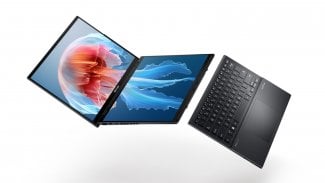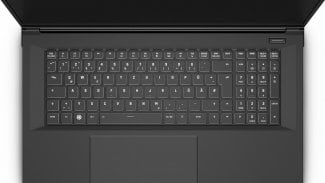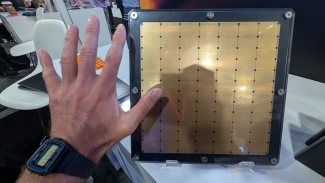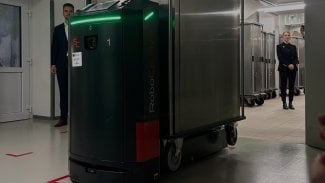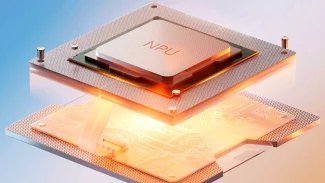groff_out
groff_out.5
Last update: 12 Sep 2002
This file is part of groff, the GNU roff type-setting system.
Copyright (C) 1989, 2001, 2002 Free Software Foundation, Inc.
rewritten from scrach 2001 by Bernd Warken <bwarken@mayn.de>
Permission is granted to copy, distribute and/or modify this document
under the terms of the GNU Free Documentation License, Version 1.1 or
any later version published by the Free Software Foundation; with the
Invariant Sections being this .ig-section and AUTHORS, with no
Front-Cover Texts, and with no Back-Cover Texts.
A copy of the Free Documentation License is included as a file called
FDL in the main directory of the groff source package.
A copy of the GNU Free Documentation License is also available in this
Debian package as /usr/share/doc/groff/copyright.
.
.
.
.
.
delim $$
.
.
.
Unfortunately, old versions of groff used an illogical position change
after some D\~commands (Dp, DP, Dt). If the number register
@STUPID_DRAWING_POSITIONING is 1 (actual default) then change position
after these commands, otherwise the position is not changed.
.
.
.
.
.
.
.
.
.
.
.
NAME
groff_out - groff intermediate output format
.
.
DESCRIPTION
.
This manual page describes the intermediate output format of the GNU
roff(7)
text processing system.
.
This output is produced by a run of the GNU
troff(1)
program before it is fed into a device postprocessor program.
.
As the GNU roff processor
groff(1)
is a wrapper program around troff that automatically calls a
postprocessor, this output does not show up normally.
.
This is why it is called
intermediate
within the
groff
R system .
.
The
groff
program provides the option
-Z
to inhibit postprocessing, such that the produced intermediate output
is sent to standard output just like calling
troff
manually.
.
In this document, the term
troff output
describes what is output by the GNU troff program, while
intermediate output
refers to the language that is accepted by the parser that prepares
this output for the postprocessors.
.
This parser is smarter on whitespace and implements obsolete elements
for compatibility, otherwise both formats are the same.
.
The pre-groff roff versions are denoted as
classical
R troff .
.
The main purpose of the intermediate output concept is to facilitate
the development of postprocessors by providing a common programming
interface for all devices.
.
It has a language of its own that is completely different from the
groff(7)
language.
.
While the
groff
language is a high-level programming language for text processing, the
intermediate output language is a kind of low-level assembler language
by specifying all positions on the page for writing and drawing.
.
The intermediate output produced by
groff
is fairly readable, while
classical troff
output was hard to understand because of strange habits that are
still supported, but not used any longer by
GNU
R troff .
.
.
LANGUAGE CONCEPTS
.
During the run of
R troff ,
the roff input is cracked down to the information on what has to be
printed at what position on the intended device.
.
So the language of the intermediate output format can be quite small.
.
Its only elements are commands with or without arguments.
.
In this document, the term "command" always refers to the intermediate
output language, never to the roff language used for document
formatting.
.
There are commands for positioning and text writing, for drawing, and
for device controlling.
.
.
Separation
. Classical troff output had strange requirements on whitespace. . The groff output parser, however, is smart about whitespace by making it maximally optional. . The whitespace characters, i.e. the R tab , R space , and newline characters, always have a syntactical meaning. . They are never printable because spacing within the output is always done by positioning commands. .Any sequence of
space
or
tab
characters is treated as a single
syntactical
R space .
.
It separates commands and arguments, but is only required when there
would occur a clashing between the command code and the arguments
without the space.
.
Most often, this happens when variable length command names,
arguments, argument lists, or command clusters meet.
.
Commands and arguments with a known, fixed length need not be
separated by syntactical space.
.
A line break is a syntactical element, too.
.
Every command argument can be followed by whitespace, a comment, or a
newline character.
.
Thus a
syntactical line break
is defined to consist of optional syntactical space that is optionally
followed by a comment, and a newline character.
.
The normal commands, those for positioning and text, consist of a
single letter taking a fixed number of arguments.
.
For historical reasons, the parser allows to stack such commands on
the same line, but fortunately, in groff intermediate output, every
command with at least one argument is followed by a line break, thus
providing excellent readability.
.
The other commands \[em] those for drawing and device controlling \[em]
have a more complicated structure; some recognize long command names,
and some take a variable number of arguments.
.
So all
D
and
x
commands were designed to request a
syntactical line break
after their last argument.
.
Only one command,
`x\X'
has an argument that can stretch over several lines, all other
commands must have all of their arguments on the same line as the
command, i.e. the arguments may not be splitted by a line break.
.
Empty lines, i.e. lines containing only space and/or a comment, can
occur everywhere.
.
They are just ignored.
.
.
Argument Units
. Some commands take integer arguments that are assumed to represent values in a measurement unit, but the letter for the corresponding scale indicator is not written with the output command arguments; see groff(7) and the groff info file for more on this topic. . Most commands assume the scale indicator\~\c the basic unit of the device, some use\~\c the scaled point unit of the device, while others, such as the color commands expect plain integers. . Note that these scale indicators are relative to the chosen device. . They are defined by the parameters specified in the device's DESC file; see groff_font(5). .Note that single characters can have the eighth bit set, as can the
names of fonts and special characters.
.
The names of characters and fonts can be of arbitrary length.
.
A character that is to be printed will always be in the current font.
.
A string argument is always terminated by the next whitespace
character (space, tab, or newline); an embedded
#
character is regarded as part of the argument, not as the beginning of
a comment command.
.
An integer argument is already terminated by the next non-digit
character, which then is regarded as the first character of the next
argument or command.
.
.
Document Parts
A correct intermediate output document consists of two parts, the prologue and the body. .The task of the
prologue
is to set the general device parameters using three exactly specified
commands.
.
The
groff prologue
is guaranteed to consist of the following three lines (in that order):
x T
device
x res n h v
x init
x res n h v
x init
with the arguments set as outlined in the section
R Device Control Commands .
.
But the parser for the intermediate output format is able to swallow
additional whitespace and comments as well.
.
The
body
is the main section for processing the document data.
.
Syntactically, it is a sequence of any commands different from the
ones used in the prologue.
.
Processing is terminated as soon as the first
x stop
command is encountered; the last line of any groff intermediate output
always contains such a command.
.
Semantically, the body is page oriented.
.
A new page is started by a
R p \~command.
.
Positioning, writing, and drawing commands are always done within the
current page, so they cannot occur before the first
R p \~command.
.
Absolute positioning (by the
H
and
R V \~commands)
is done relative to the current page, all other positioning
is done relative to the current location within this page.
.
.
COMMAND REFERENCE
.
This section describes all intermediate output commands, the classical
commands as well as the
groff
extensions.
.
.
Comment Command
.I # anything \[la]end_of_line\[ra]
A comment.
.
Ignore any characters from the
R # \~\c
character up to the next newline character.
.
This command is the only possibility for commenting in the intermediate
output.
.
Each comment can be preceded by arbitrary
syntactical
R space ;
every command can be terminated by a comment.
.
.
Simple Commands
. The commands in this subsection have a command code consisting of a single character, taking a fixed number of arguments. . Most of them are commands for positioning and text writing. . These commands are smart about whitespace. . Optionally, syntactical space can be inserted before, after, and between the command letter and its arguments. . All of these commands are stackable, i.e., they can be preceded by other simple commands or followed by arbitrary other commands on the same line. . A separating syntactical space is only necessary when two integer arguments would clash or if the preceding argument ends with a string argument. . . Open a new environment by copying the actual device configuration data to the environment stack. . The current environment is setup by the device specification and manipulated by the setting commands. . . Close the actual environment (opened by a preceding R { \~command) and restore the previous environment from the environment stack as the actual device configuration data. . \} \" endif @USE_ENV_STACK . . Print a special groff character named . The trailing syntactical space or line break is necessary to allow character names of arbitrary length. . The character is printed at the current print position; the character's size is read from the font file. . The print position is not changed. . . Print character\~\c at the current print position; the character's size is read from the font file. . The print position is not changed. . . Set font to font number\~\c (a non-negative integer). . . Move right to the absolute vertical position\~\c (a non-negative integer in basic units\~\c relative to left edge of current page. . . Move (a non-negative integer) basic units\~\c horizontally to the right. . [54] allows negative values for n also, but groff doesn't use this. . . Set the color for text (glyphs), line drawing, and the outline of graphic objects using different color schemes; the analoguous command for the filling color of graphic objects is R DF . . The color components are specified as integer arguments between 0 and \n[@maxcolor]. . The number of color components and their meaning vary for the different color schemes. . These commands are generated by the groff escape sequence R \*[@backslash]m . . No position changing. . These commands are a groff extension. . ..
Set color using the CMY color scheme, having the 3\~color components
cyan, magenta, and yellow.
.
.
Set color to the default color value
(black in most cases).
.
No component arguments.
.
.
Set color to the shade of gray given by the argument, an integer
between 0 (black) and \n[@maxcolor] (white).
.
.
Set color using the CMYK color scheme, having the 4\~color components
cyan, magenta, yellow, and black.
.
Set color using the RGB color scheme, having the 3\~color components
red, green, and blue.
.
.
.
Print character with index\~\c
(a non-negative integer) of the current font.
.
The print position is not changed.
.
This command is a groff extension.
.
.
Inform the device about a line break, but no positioning is done by
this command.
.
In classical troff, the integer arguments
and\~\c
informed about the space before and after the current line to
make the intermediate output more human readable without performing
any action.
.
In groff, they are just ignored, but they must be provided for
compatibility reasons.
.
.
Begin a new page in the outprint.
.
The page number is set to\~\c
.
This page is completely independent of pages formerly processed even
if those have the same page number.
.
The vertical position on the outprint is automatically set to\~0.
.
All positioning, writing, and drawing is always done relative to a
page, so a
R p \~command
must be issued before any of these commands.
.
.
Set point size to
scaled points
(this is unit\~\c
in GNU
R troff ).
.
Classical troff used the unit
points
(\c
instead; see section
R COMPATIBILITY .
.
.
Print a word, i.e. a sequence of characters
terminated by a space character or a line break; an optional second
integer argument is ignored (this allows the formatter to generate
an even number of arguments).
.
The first character should be printed at the current position, the
current horizontal position should then be increased by the width of
the first character, and so on for each character.
.
The widths of the characters are read from the font file, scaled for the
current point size, and rounded to a multiple of the horizontal
resolution.
.
Special characters cannot be printed using this command (use the
C
command for named characters).
.
This command is a groff extension; it is only used for devices whose
DESC
file contains the
tcommand
keyword; see
groff_font(5).
.
.
Print word with track kerning.
.
This is the same as the
t
command except that after printing each character, the current
horizontal position is increased by the sum of the width of that
character and\~\c
(an integer in
basic units\~\c
This command is a groff extension; it is only used for devices whose
DESC
file contains the
tcommand
keyword; see
groff_font(5).
.
.
Move down to the absolute vertical position\~\c
(a non-negative integer in basic units\~\c
relative to upper edge of current page.
.
.
Move
basic units\~\c
down
(n
is a non-negative integer).
.
[54]
allows negative values for
n
also, but
groff
doesn't use this.
.
.
Informs about a paddable whitespace to increase readability.
.
The spacing itself must be performed explicitly by a move command.
.
.
Graphics Commands
. Each graphics or drawing command in the intermediate output starts with the letter\~\c D followed by one or two characters that specify a subcommand; this is followed by a fixed or variable number of integer arguments that are separated by a single space character. . A R D command may not be followed by another command on the same line (apart from a comment), so each R D command is terminated by a syntactical line break. .troff
output follows the classical spacing rules (no space between command
and subcommand, all arguments are preceded by a single space
character), but the parser allows optional space between the command
letters and makes the space before the first argument optional.
.
As usual, each space can be any sequence of tab and space characters.
.
Some graphics commands can take a variable number of arguments.
.
In this case, they are integers representing a size measured in basic
units\~\c
.
The arguments called
stand for horizontal distances where positive means right, negative
left.
.
The arguments called
stand for vertical distances where positive means down, negative up.
.
All these distances are offsets relative to the current location.
.
Unless indicated otherwise, each graphics command directly corresponds
to a similar
groff
\*[@backslash]D
escape sequence; see
groff(7).
.
Unknown D\~commands are assumed to be device-specific.
.
Its arguments are parsed as strings; the whole information is then
sent to the postprocessor.
.
In the following command reference, the syntax element
\[la]line_break\[ra]
means a
syntactical line break
as defined in section
R Separation .
.
.
Draw B-spline from current position to offset
then to offset
if given, etc. up to
This command takes a variable number of argument pairs;
the current position is moved to the terminal point of the drawn curve.
.
.
Draw arc from current position to
with center at
then move the current position to the final point of the arc.
.
.
Draw a solid circle using the current fill color with diameter\~\c
(integer in basic units\~\c
with leftmost point at the current position; then move the current
position to the rightmost point of the circle.
.
An optional second integer argument is ignored (this allows to the
formatter to generate an even number of arguments).
.
This command is a groff extension.
.
.
Draw circle line with diameter\~\c
(integer in basic units\~\c
with leftmost point at the current position; then move the current
position to the rightmost point of the circle.
.
.
Draw a solid ellipse in the current fill color with a horizontal
diameter of\~\c
and a vertical diameter of\~\c
(both integers in basic units\~\c
with the leftmost point at the current position; then move to the
rightmost point of the ellipse.
.
This command is a groff extension.
.
.
Draw an outlined ellipse with a horizontal diameter of\~\c
and a vertical diameter of\~\c
(both integers in basic units\~\c
with the leftmost point at current position; then move to the
rightmost point of the ellipse.
.
.
Set fill color for solid drawing objects using different color
schemes; the analoguous command for setting the color of text, line
graphics, and the outline of graphic objects is
R m .
.
The color components are specified as integer arguments between 0 and
\n[@maxcolor].
.
The number of color components and their meaning vary for the
different color schemes.
.
These commands are generated by the groff escape sequences
\*[@backslash]D'F ...'
and
\*[@backslash]M
(with no other corresponding graphics commands).
.
No position changing.
.
This command is a groff extension.
.
.
.
Set fill color for solid drawing objects using the CMY color scheme,
having the 3\~color components cyan, magenta, and yellow.
.
.
Set fill color for solid drawing objects to the default fill color value
(black in most cases).
.
No component arguments.
.
.
Set fill color for solid drawing objects to the shade of gray given by
the argument, an integer between 0 (black) and \n[@maxcolor] (white).
.
.
Set fill color for solid drawing objects using the CMYK color scheme,
having the 4\~color components cyan, magenta, yellow, and black.
.
Set fill color for solid drawing objects using the RGB color scheme,
having the 3\~color components red, green, and blue.
.
.
.
The argument
must be an integer in the range -32767 to 32767.
.
0 \[<=] n \[<=] 1000
Set the color for filling solid drawing objects to a shade of gray,
where 0 corresponds to solid white, 1000 (the default) to solid black,
and values in between to intermediate shades of gray; this is
obsoleted by command
R DFg .
.
R n < 0 or n > 1000
Set the filling color to the color that is currently being used for
the text and the outline, see command
R m .
For example, the command sequence
.
mg 0 0 \n[@maxcolor] Df -1 . sets all colors to blue. .
No position changing.
.
This command is a groff extension.
.
.
.
Draw line from current position to offset
(integers in basic units\~\c
then set current position to the end of the drawn line.
.
.
Draw a polygon line from current position to offset
from there to offset
etc. up to offset
and from there back to the starting position.
.
For historical reasons, the position is changed by adding the sum of
all arguments with odd index to the actual horizontal position and the
even ones to the vertical position.
.
Although this doesn't make sense it is kept for compatibility.
.
\}
As the polygon is closed, the end of drawing is the starting point, so
the position doesn't change.
\}
.
This command is a groff extension.
.
.
The same macro as the corresponding
Dp
command with the same arguments, but draws a solid polygon in the
current fill color rather than an outlined polygon.
.
The position is changed in the same way as with
R Dp .
\}
No position changing.
.
This command is a groff extension.
.
.
Set the current line thickness to\~\c
(an integer in basic units\~\c
if
if
select the smallest available line thickness; if
set the line thickness proportional to the point size (this is the
default before the first
Dt
command was specified).
.
For historical reasons, the horizontal position is changed by adding
the argument to the actual horizontal position, while the vertical
position is not changed.
.
Although this doesn't make sense it is kept for compatibility.
.
\}
No position changing.
.
This command is a groff extension.
.
.
Device Control Commands
. Each device control command starts with the letter x followed by a space character (optional or arbitrary space/\:tab in groff) and a subcommand letter or word; each argument (if any) must be preceded by a syntactical space. . All x commands are terminated by a R syntactical line break ; no device control command can be followed by another command on the same line (except a comment). .The subcommand is basically a single letter, but to increase
readability, it can be written as a word, i.e. an arbitrary sequence
of characters terminated by the next tab, space, or newline character.
.
All characters of the subcommand word but the first are simply ignored.
.
For example,
troff
outputs the initialization command
x i
as
x init
and the resolution command
x r
as
R x res .
.
But writings like
x i_like_groff
and
x roff_is_groff
resp. are accepted as well to mean the same commands.
.
In the following, the syntax element
\[la]line_break\[ra]
means a
syntactical line break
as defined in section
R Separation .
.
Use
as the intended name for the current file in error reports.
.
This is useful for remembering the original file name when groff uses
an internal piping mechanism.
.
The input file is not changed by this command.
.
This command is a groff extension.
.
.
Mount font position\~\c
(a non-negative integer) with font named\~\c
(a text word),
cf.
groff_font(5).
.
.
Set character height to\~\c
(a positive integer in scaled points\~\c
.
Classical troff used the unit
points (\c
instead; see section
R COMPATIBILITY .
.
.
Initialize device.
.
This is the third command of the prologue.
.
.
Parsed but ignored.
.
The classical documentation reads
pause device, can be
R restarted .
.
.
Resolution is\~\c
while
is the minimal horizontal motion, and
the minimal vertical motion possible with this device; all arguments
are positive integers in basic units\~\c
per inch.
.
This is the second command of the prologue.
.
.
Set slant to\~\c
(an integer in basic units\~\c
.
.
Terminates the processing of the current file; issued as the last
command of any intermediate troff output.
.
.
Generate trailer information, if any.
.
In
R groff ,
this is actually just ignored.
.
.
Set name of device to word
a sequence of characters ended by the next whitespace character.
.
The possible device names coincide with those from the groff
-T
option.
.
This is the first command of the prologue.
.
.
Configure underlining of spaces.
.
If
is\~1, start underlining of spaces;
if
is\~0, stop underlining of spaces.
.
This is needed for the
cu
request in
nroff
mode and is ignored otherwise.
.
This command is a groff extension.
.
.
Send string
uninterpreted to the device.
.
If the line following this command starts with a
+
character this line is interpreted as a continuation line in the
following sense.
.
The
+
is ignored, but a newline character is sent instead to the device, the
rest of the line is sent uninterpreted.
.
The same applies to all following lines until the first character of a
line is not a
+
character.
.
This command is generated by the
groff
escape sequence
R \*[@backslash]X .
.
The line-continuing feature is a groff extension.
.
.
Obsolete Command
. In classical troff output, the writing of a single character was mostly done by a very strange command that combined a horizontal move and the printing of a character. . It didn't have a command code, but is represented by a 3-character argument consisting of exactly 2\~digits and a character. .Move right
(exactly two decimal digits) basic units\~\c
then print character\~\c
.
In groff, arbitrary syntactical space around and within this command
is allowed to be added.
.
Only when a preceding command on the same line ends with an argument
of variable length a separating space is obligatory.
.
In
classical
R troff ,
large clusters of these and other commands were used, mostly without
spaces; this made such output almost unreadable.
.
.
For modern high-resolution devices, this command does not make sense
because the width of the characters can become much larger than two
decimal digits.
.
In groff, this is only used for the devices
R X75 ,
R X75-12 ,
R X100 ,
and
R X100-12 .
.
For other devices,
the commands
t
and\~\c
u
provide a better functionality.
.
.
POSTPROCESSING
.
The
roff
postprocessors are programs that have the task to translate the
intermediate output into actions that are sent to a device.
.
A device can be some piece of hardware such as a printer, or a software
file format suitable for graphical or text processing.
.
The
groff
system provides powerful means that make the programming of such
postprocessors an easy task.
There is a library function that parses the intermediate output and
sends the information obtained to the device via methods of a class
with a common interface for each device.
.
So a
groff
postprocessor must only redefine the methods of this class.
.
For details, see the reference in section
R FILES .
.
.
EXAMPLES
.
This section presents the intermediate output generated from the same
input for three different devices.
.
The input is the sentence
hell world
fed into groff on the command line.
.
High-resolution device
ps
.
.
.
x T ps x res 72000 1 1 x init p1 x font 5 TR f5 s10000 V12000 H72000 thell wh2500 tw H96620 torld n12000 0 x trailer V792000 x stop.
This output can be fed into the postprocessor
grops(1)
to get its representation as a PostScript file.
.
.
Low-resolution device
latin1
.
.
This is similar to the high-resolution device except that the
positioning is done at a minor scale.
.
Some comments (lines starting with
R # )
were added for clarification; they were not generated by the
formatter.
.
.
# prologue x T latin1 x res 240 24 40 x init # begin a new page p1 # font setup x font 1 R f1 s10 # initial positioning on the page V40 H0 # write text `hell' thell # inform about a space, and do it by a horizontal jump wh24 # write text `world' tworld # announce line break, but do nothing because ... n40 0 # ... the end of the document has been reached x trailer V2640 x stop.
This output can be fed into the postprocessor
grotty(1)
to get a formatted text document.
.
.
Classical style output
.
.
As a computer monitor has a very low resolution compared to modern
printers the intermediate output for the X\~devices can use the
jump-and-write command with its 2-digit displacements.
.
.
x T X100 x res 100 1 1 x init p1 x font 5 TR f5 s10 V16 H100 # write text with old-style jump-and-write command ch07e07l03lw06w11o07r05l03dh7 n16 0 x trailer V1100 x stop.
This output can be fed into the postprocessor
R xditview (1x)
or
gxditview(1)
for displaying in\~X.
.
Due to the obsolete jump-and-write command, the text clusters in the
classical output are almost unreadable.
.
.
COMPATIBILITY
.
The intermediate output language of the
classical troff
was first documented in
R [97] .
.
The
groff
intermediate output format is compatible with this specification
except for the following features.
The classical quasi device independence is not yet implemented.
.
The old hardware was very different from what we use today.
.
So the groff devices are also fundamentally different from the ones in
classical troff.
.
For example, the classical PostScript device was called
post
and had a resolution of 720 units per inch,
while groff's
ps
device has a resolution of 72000 units per inch.
.
Maybe, by implementing some rescaling mechanism similar to the
classical quasi device independence, these could be integrated into
modern groff.
.
The B-spline command
D~
is correctly handled by the intermediate output parser, but the
drawing routines aren't implemented in some of the postprocessor
programs.
The argument of the commands
s
and
x H
has the implicit unit scaled point\~\c
in groff, while classical troff had point (\c
.
This isn't an incompatibility, but a compatible extension,
for both units coincide for all devices without a
sizescale
parameter, including all classical and the groff text devices.
.
The few groff devices with a sizescale parameter either did
not exist, had a different name, or seem to have had a different
resolution.
.
So conflicts with classical devices are very unlikely.
.
The position changing after the commands
R Dp ,
R DP ,
and
Dt
is illogical, but as old versions of groff used this feature it is
kept for compatibility reasons.
.\} \" @STUPID_DRAWING_POSITIONING
Temporarily, there existed some confusion on the positioning after the
D
commands that are groff extensions.
.
This has been clarified by establishing the classical rule for all
groff drawing commands:
.
The position after a graphic object has been drawn is at its end;
for circles and ellipses, the end is at the right side.
.
From this, the positionings specified for the drawing commands above
follow quite naturally.
.\} \" @STUPID_DRAWING_POSITIONING
.
The differences between groff and classical troff are documented in
groff_diff(7).
.
.
FILES
.
I /usr/share/groff/1.18.1/font/dev name /DESC
Device description file for device
R name .
.
B \[la]groff_source_dir\[ra] /src/libs/libdriver/input.cc
Defines the parser and postprocessor for the intermediate output.
.
It is located relative to the top directory of the
groff
source tree, e.g.
R @GROFFSRCDIR@ .
.
This parser is the definitive specification of the
groff
intermediate output format.
.
.
SEE ALSO
.
A reference like
groff(7)
refers to a manual page; here
groff
in section\~\c
7
of the man-page documentation system.
.
To read the example, look up section\~7 in your desktop help
system or call from the shell prompt
.
ellCommand man 7 groff
.
For more details, see
man(1).
.
groff(1)
option
-Z
and further readings on groff.
.
groff(7)
for details of the
groff
language such as numerical units and escape sequences.
.
groff_font(5)
for details on the device scaling parameters of the
DESC
file.
.
troff(1)
generates the device-independent intermediate output.
.
roff(7)
for historical aspects and the general structure of roff systems.
.
groff_diff(7)
The differences between the intermediate output in groff and classical
troff.
.
grodvi(1),
grohtml(1),
grolbp(1),
grolj4(1),
grops(1),
grotty(1)
the groff postprocessor programs.
.
For a treatment of all aspects of the groff system within a single
document, see the
groff info
R file .
.
It can be read within the integrated help systems, within
emacs(1)
or from the shell prompt by
.
ellCommand info groff
.
The
classical troff output language
is described in two AT&T Bell Labs CSTR documents available on-line at
\
"Bell Labs CSTR site" .
.
[CSTR #97]
A Typesetter-independent TROFF
by
Brian Kernighan
is the original and most concise documentation on the output language;
see
CSTR\~#97.
.
[CSTR\~#54]
The 1992 revision of the
Nroff/\:Troff User's Manual
by
J. F. Osanna
and
Brian Kernighan
isn't as concise as
[CSTR\~#97]
regarding the output language;
see
CSTR\~#54.
.
.
AUTHORS
.
Copyright (C) 1989, 2001, 2002 Free Software Foundation, Inc.
This document is distributed under the terms of the FDL (GNU Free
Documentation License) version 1.1 or later.
.
You should have received a copy of the FDL with this package; it is also
available on-line at the
.
This document is part of
R groff ,
the GNU roff distribution.
.
It is based on a former version - published under the GPL - that
described only parts of the
groff
extensions of the output language.
.
It has been rewritten 2002 by
and is maintained by
.
